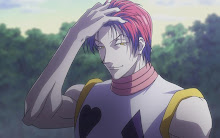How to Draw a Portrait of Michael Jackson
Many artists have the penchant to sketch their favorite stars from different genre and musicians are often the preferred choices. The 'King of Pop,' Michael Jackson, was one of the stars the artists most widely covered. His face had some distinguishing characteristics that make his portrait a typical job to execute. Similarly, he was often depicted performing some of his most popular dance steps. To help you identify and replicate these idiosyncrasies, here is a step-by-step guide to sketch Michael Jackson:
• Reference Image. The first step would be to obtain an appropriate reference picture. Keep in mind the complexity levels - face only, full-length, or otherwise. You can choose from the wide collection available on the internet.
• Scale and Proportions. Decide upon the size of the portrait vis-à-vis the reference picture. Adopt the relative ratios of the various elements as present in the original image.
• Outlines. Study the actual contours first before beginning to sketch light outlines for the whole figure. Such a skeletal sketch will give you an idea about the accuracy of posture, structure, and proportions. Use a fine eraser that does not wear out the drawing base surface greatly.
• Facial features. Start with the outmost identifiable boundaries for each individual feature and move inwards, including details. For instance, use eye sockets for eye area, imaginary curvilinear lines for nose, roughly semicircular structure for ears, and so on.
• Distinguishing Factors. Michael Jackson's face had some distinct characteristics that need to be factored in. Some of them include a remarkable square jaw, broad nose, thick small lips, and near-perfect eyebrows. Jackson always maintained a slim, athletic build. Some of his signature dance forms, like moonwalk and toe dance regularly appear in his full-length pictures. However, he continued to experiment with his facial looks throughout his career. Therefore, depending upon the date of your reference picture, some of the features like cheekbones, lips, and nose might vary in different degrees.
• Hair. Michael Jackson had wavy and flowing tresses, which he wore medium or long. In most cases, he had strands or well-made locks over his forehead or the sides of his face. Sketching curly hair is much trickier than sketching the straight one. Therefore, pick your reference photograph carefully. If you are not comfortable with drawing such hair do, opt either for a photo with lesser-exposed hair or any of his later images when he wore straightened hair.
• Shading. It is very important to use appropriately aligned retrace lines and shading to add the effect of light and detailed features. For highlighting these effects, use slanting pencil strokes and tortillion (a tool for smudging pencil lines).


0 komentar:
Post a Comment